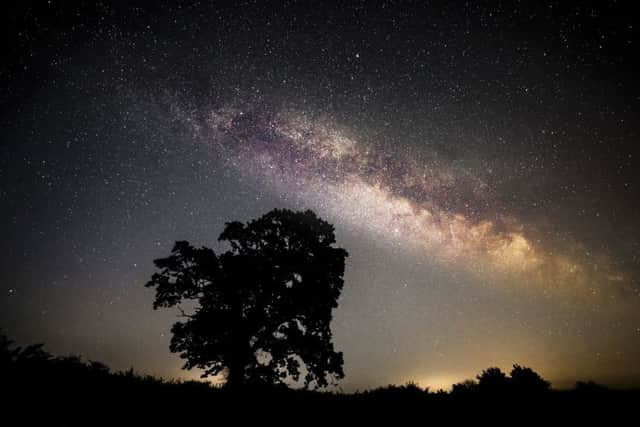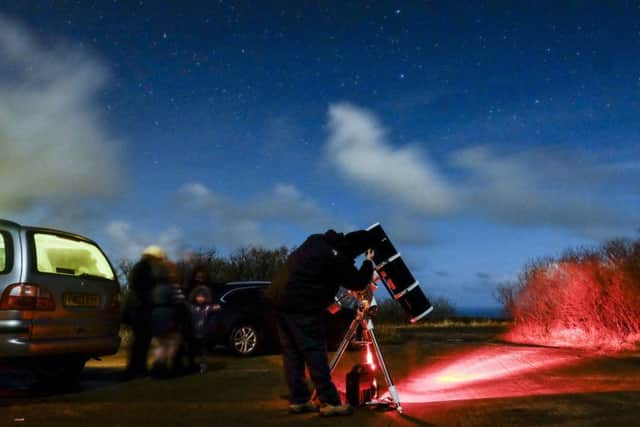National Parks move to protect darkest nights
North Yorkshire’s national parks, free from the blight of urban light pollution, have become increasingly popular with those seeking exceptional access to the skies above. Now, as moves are made to capitalise further on this treasured commodity, the groundwork is gradually being laid for official international dark skies reserve status.
And while work is still in the early stages, such a significant badge could project the region into the heights of astronomical prominence.
Advertisement
Hide AdAdvertisement
Hide Ad“We as a country are becoming more and more urban,” said Mark Allum, head of access and engagement at the Yorkshire Dales National Park Authority.


“People are living in greater concentrations in towns and cities - something like 85 per cent of people no longer have access to a proper dark sky at night.
“That makes places like our national parks even more special.”
Preserving such rare insights into the dark skies is vitally important, he added.
Advertisement
Hide AdAdvertisement
Hide Ad“Light pollution isn’t thought of as pollution in the same way as say plastics or cars, but it is pollution,” said Mr Allum. “And our dark skies are under threat.


“The national park is a very clear dark area. We are trying do what we can to protect that for years to come.”
The Yorkshire Dales National Park authority, as part of its five-year plan, has formally revealed it’s hopes for official dark skies reserve status by 2021.
Such a move, said Mr Allum, would not only bring more tourism to the area but would meet its need to protect and preserve this most unique of environments.
Advertisement
Hide AdAdvertisement
Hide AdNow, after plans were passed for a new dark skies viewing centre within the North York Moors National Park, members reveal that further investigations are underway.


While the park hasn’t yet entered into any formal engagement processes, it is exploring what it may need to do now were it to take that final step in the future.
“Fundamentally, it’s about stargazing,” said Mike Hawtin, dark skies officer. “But the main reason for pushing this is to increase and improve tourism in the winter.
“It’s not just about star gazing, it’s about encouraging people to go out and do lots of different things.
Advertisement
Hide AdAdvertisement
Hide Ad“As it stands, formally, we are investigating the statutory side of this,” he added. “We are not formally starting that process as it’s not part of our business plan, but I am doing some investigative work.”


Meter readings are being carried out, he revealed, the park is exploring where potential buffer zones could be, and discussions are underway with authorities about lighting levels - all work that would be needed as part of any potential future bid.
The parks’ dark skies festival in February, now in its third year, have proved to be an “incredible success”, he said, with the only complaint being that it sold out too quickly.
Further work is now underway in the region, he added, with workshops being held about astro-tourism, toolkits being created, and experts at a growing number of events.
Advertisement
Hide AdAdvertisement
Hide Ad“Dark skies is something that has really caught the public’s imagination,” he said.
“We tend to think of this as a fairly new thing, with people like Brian Cox bringing it to the fore, but we had Starfest going for a decade, we’ve got our dark sky discovery sites.
“That makes it more accessible. It’s gone beyond the enthusiast level now, and come into the mainstream. It really does impress and amaze people.
“We protect the tranquillity and views of the national park during the day, and we want to do the same at night.”